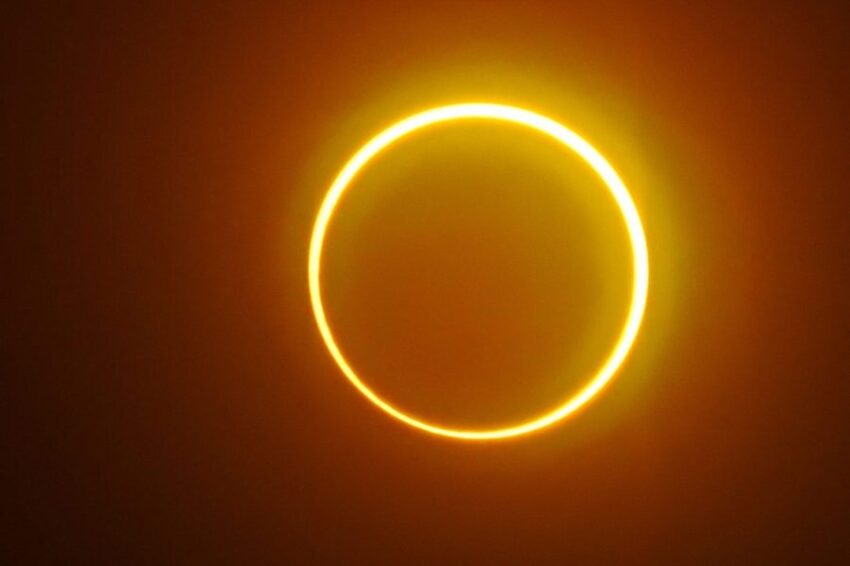(WTVO) — On Saturday, the moon will partially obscure the sun in a “ring of fire” solar eclipse.
Tens of millions in the Americas will have front-row seats for the rare phenomenon.
Unlike the last solar eclipse, which was a total solar eclipse that occurred in August, 2017, Saturday’s eclipse will be what’s called an annular solar eclipse — better known as a ring of fire.
The eclipse will briefly dim the skies over parts of the western U.S., as well as Central and South America.
What is a solar eclipse?
In general, a solar eclipse takes place when the moon’s orbit places it between the Earth and the sun, either partially or completely obscuring it from view.
An annular solar eclipse, however, occurs when an eclipse takes place while the moon is at its farthest point from Earth. Because of this additional distance, it does not fully block the sun, leaving a portion of the sun visible behind it.
A bright, blazing border will appear around the moon for as much as five minutes, wowing skygazers along a narrow path stretching from Oregon to Brazil.
The celestial showstopper will yield a partial eclipse across the rest of the Western Hemisphere.
It’s a prelude to the total solar eclipse that will sweep across Mexico, the eastern half of the U.S. and Canada, in six months. Unlike Saturday’s eclipse, during which the moon will be too far from Earth to completely cover the sun from our perspective, the moon will be at the perfect distance on April 8, 2024.
Will we see it?
In the U.S. alone, more than 6.5 million people live along the so-called path of annularity, with another 68 million within 200 miles, according to NASA.
At the same time, a crescent-shaped partial eclipse will be visible in every U.S. state, although just barely in Hawaii, provided the skies are clear. Canada, Central America and most of South America, also will see a partial eclipse. The closer to the ring of fire path, the bigger the bite the moon will appear to take out of the sun.
If you can’t see it from where you are, don’t worry. NASA and others will provide a livestream of the eclipse.
It will be 2039 before another ring of fire is visible in the U.S., and Alaska will be the only state then in the path of totality. And it will be 2046 before another ring of fire crosses into the U.S. Lower 48. That doesn’t mean they won’t be happening elsewhere: The southernmost tip of South America will get one next October and Antarctica in 2026.
The Associated Press contributed to this report.
Read: Read More




